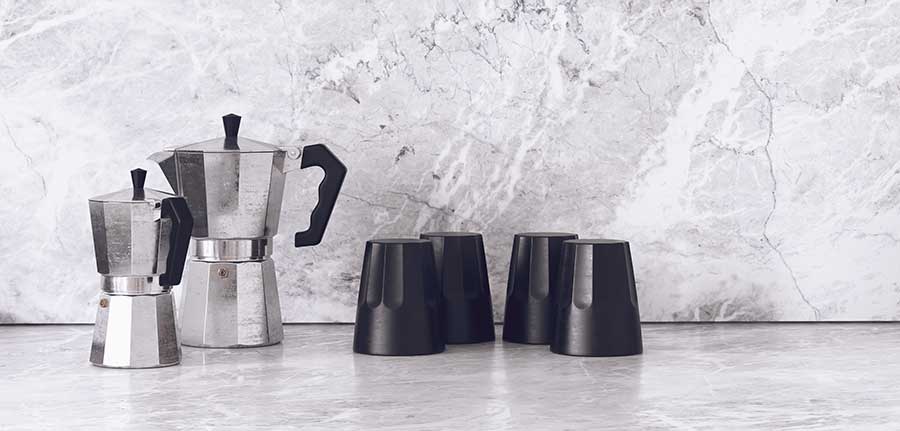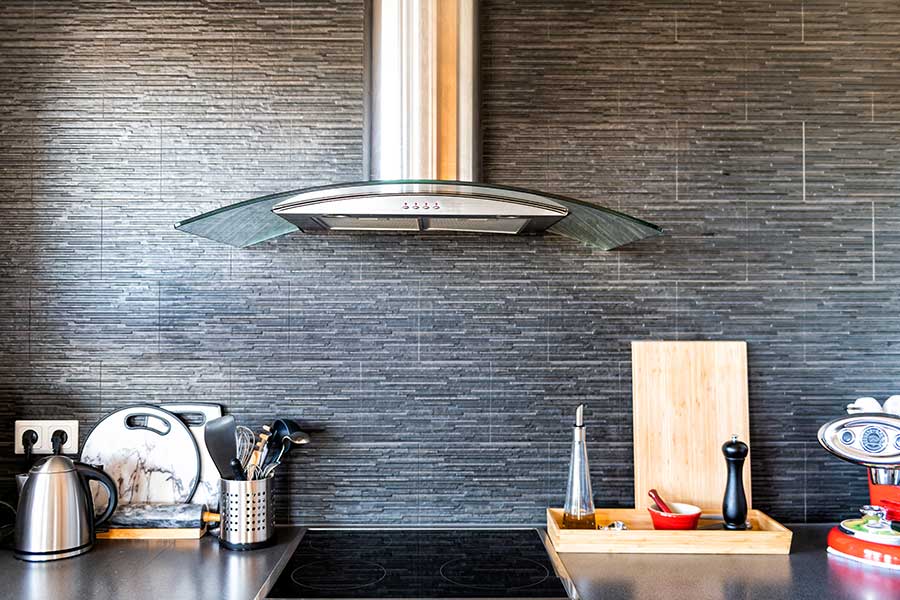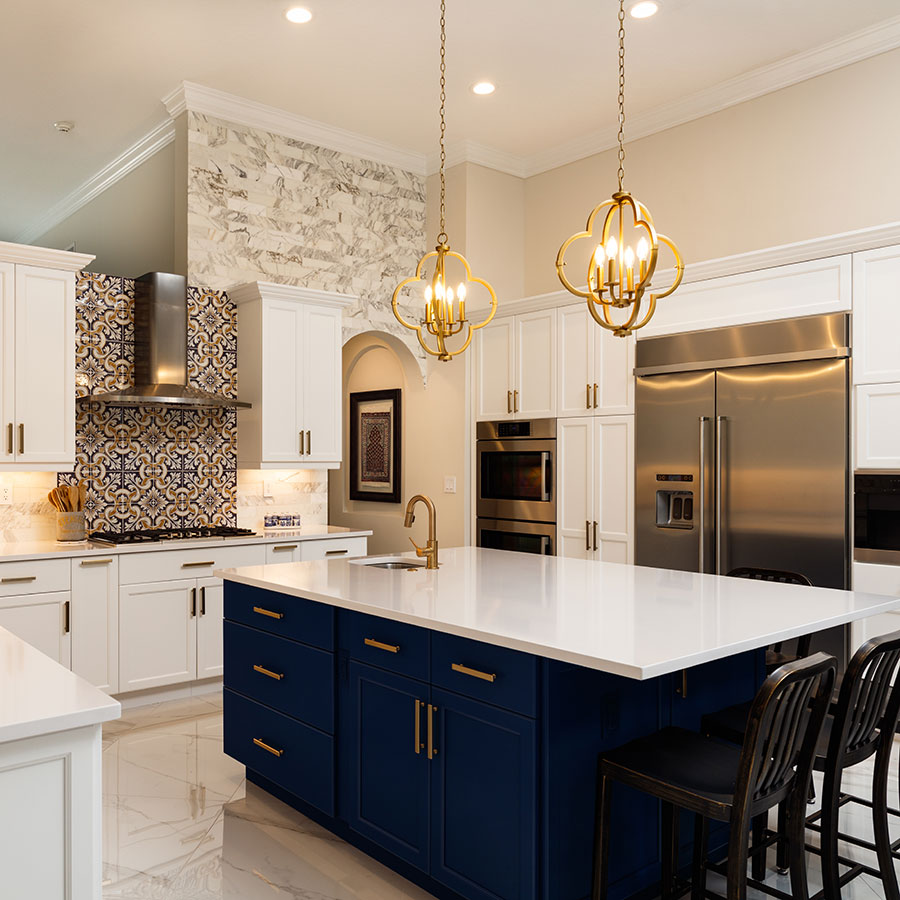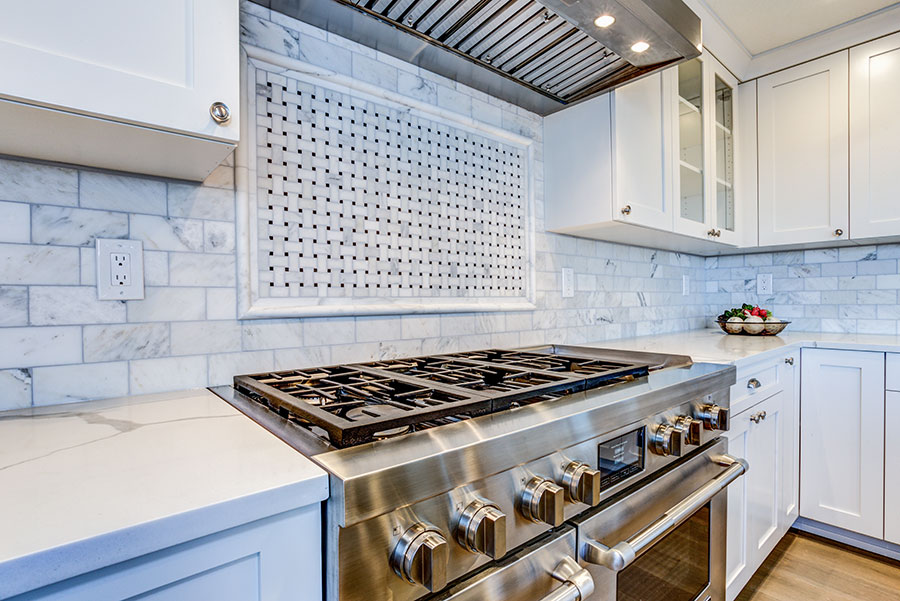Despite the dramatic effect, it can be more expensive which is something you will want to weigh out. You can learn more about bookmatching in our templating and seams article.
You can also select a different natural stone to pair with your natural stone countertop. If this is the route you go, you will want to consider the variation and movement in your slab when pairing with another natural stone.
If you have a low to no pattern countertop such as white quartz, you can pair with a high pattern, high contrast natural stone for the backsplash. If you have a dark natural stone countertop with little pattern and flow, you can pair with a nice light colored stone for the backsplash, achieving a nice balance of the two natural stone products.
If ceramic tile is the way you decided to go, you could select a color from your countertop and create your backsplash based on those colors. We talk about complement, contrast, or conceal again here. If you want to complement your countertop you could select a color that is in your countertop – for example, if your granite countertop has tan or grey veining throughout you can select a tan or grey backsplash. If contrasting is what you are after you might select a dark tile with a light countertop or a light tile with a dark countertop. If you want to conceal your backsplash, making another aspect of your kitchen design the star of the show you would try to match your tile to the main color of your natural stone countertop and use a grout that closely matches your tile selection as well.
You can even mix your backsplash options. One design option is to put a natural stone backsplash behind the range and then a tile backsplash on the adjacent walls. This would create an appealing and interesting look.
Another way to highlight your backsplash is to install under-cabinet lighting to spotlight both your backsplash and your countertop.





